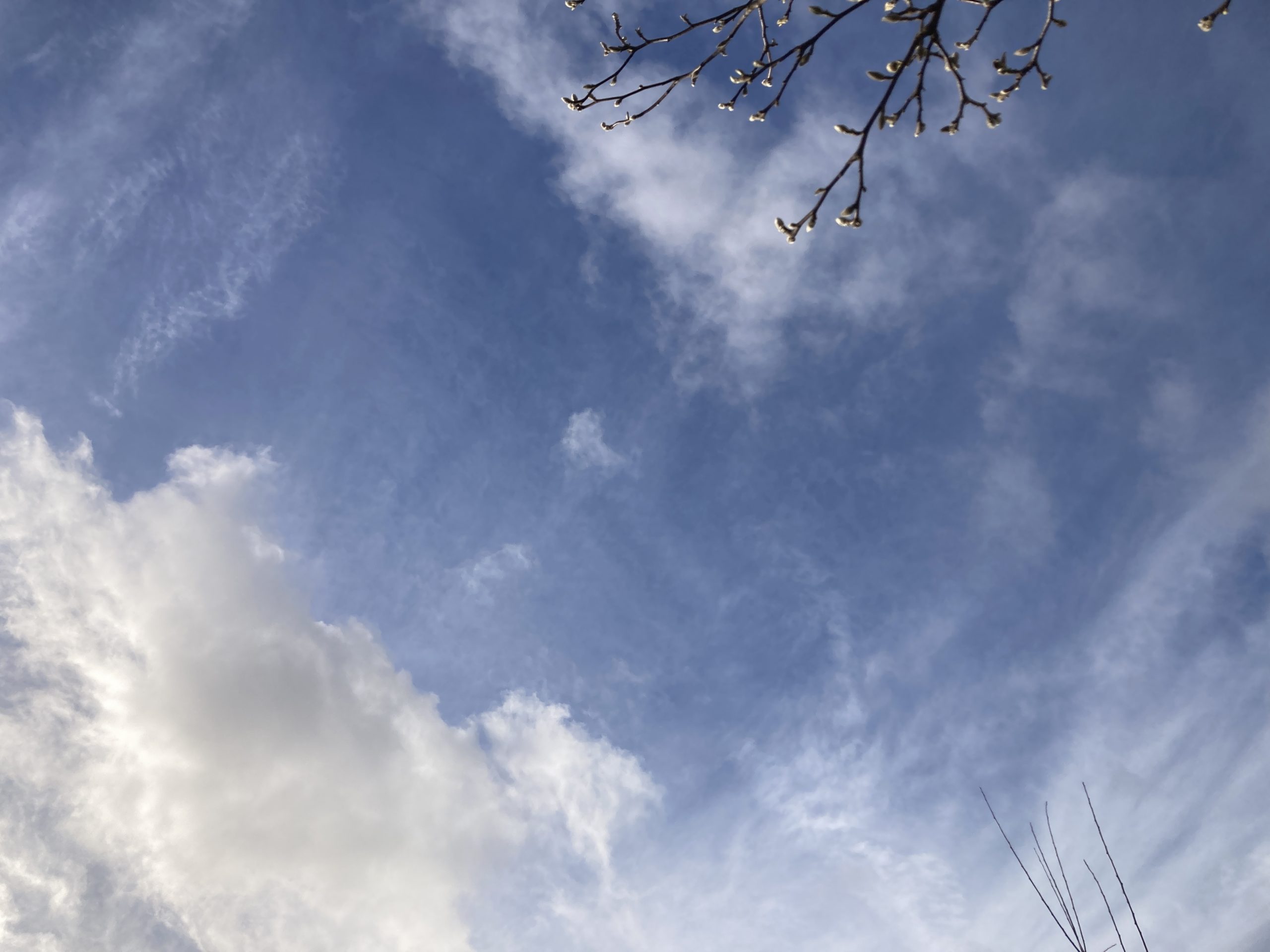Looking up to take a picture of the sky with which to accompany today’s post, my lens angled to capture an optimistic patch of blue, a few branches of our wonderful magnolia tree also fell into frame.
The twisting and turning, somewhat irregularly positioned branches created familiar, wintery silhouettes but it was the swelling buds that really caught my eye: like fat pussy willow buds about to burst through their silvery fur coats.
We tend not to notice buds until spring but like the first signs of spring on many trees and shrubs, these have actually been here since last summer, their growth stimulated by the energy of the sun when there were still leaves to capture it.
In autumn, buds become dormant, lying low until its warm enough for them to become flowers or leaves. Magnolias go one step further to protect next year’s foliage and blooms during winter by covering their buds with an insulating blanket of fine hairs called trichomes.
In spring, when rising temperatures trigger tell the first buds it’s time to wake up and do their thing, the larger of the furry scales burst open and the beautiful pink and white flowers emerge. As one of the earliest flowering plants, before bees, butterflies or moths were on the scene (they cane 20-30 millions of years later), magnolias have evolved to be primarily pollinated by beetles, insects that were thought to be around at the time.
This is why magnolia’s petals are so leathery and the seeds so well protected – they have adapted to withstand the clumsy approach of their main pollinator friends: beetles’ mouths are made for chewing rather than for gathering pollen and nectar and are known to inadvertently chomp through the flowers as they roam.
Only when the magnolia flowers have fully bloomed and the main survival job of pollination done, do the leaves emerge but this time from the smaller of the buds. Looking closely at a magnolia branch now, I can spot the two different sized buds, something I hadn’t really ever noticed before. Large buds at the end of twigs with smaller ones down the twigs or on either side.
Last year the blooms came out too early after a mild winter. I remember it feeling odd, almost like a premonition of further unseasonal anomalies to come. Sadly, a wintry gale swept in just before the pandemic and blew the petals down. I think it’s the first year I didn’t even take any pictures.
Hopefully this year it will reset its clock and open towards the end of March. Either way, the flowering of the magnolia and the joy it brings is most definitely something to look forward to.

